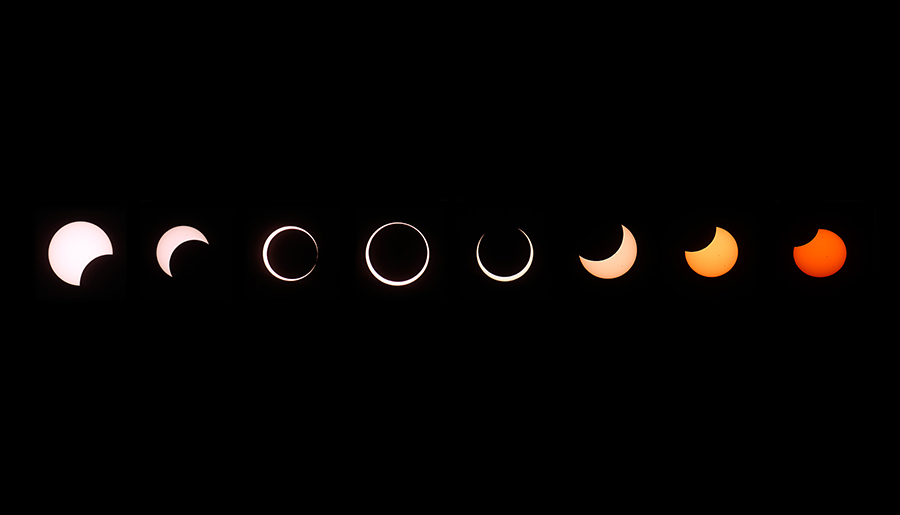On April 20, Western Australia’s Exmouth is going to the luckiest of ducks. This is because it’ll be the only joint in Australia that’ll experience a hybrid solar eclipse.
But, hold the phone, what exactly is a hybrid solar eclipse? Well, it’s a solar eclipse that changes its appearance as the Moon moves. The sun will go from being partially blocked, to having its centre blocked, to being 100% blocked.
It’s also worth noting that hybrid solar eclipses are super rare. The last one was in 2013, and the one after Thursday’s will happen in 2031.
Western Australia’s hybrid solar eclipse will begin at around 10.04.31am and will last two hours, 58 minutes, and three seconds. However, it will peak at 11.30.17am. At this time, the sun will be completely blocked. This blockage will last only 58 seconds.
The Solar Eclipse the Rest of Australia Gets
Now, if you can’t get to Western Australia’s Exmouth, don’t get jelly. ‘Cause the rest of Australia is scoring a partial solar eclipse. During partial eclipses, the sun is never completely blocked by our moon.
What’s more, if you’re keen to enjoy this particular partial eclipse, it’ll be easy to do so. Here’s when it’ll be hitting each of our capitals:
Sydney
In Sydney, the eclipse starts at 1.36pm AEST, maximums at 2.28pm, and ends at 3.18pm.
Melbourne
In Melbourne, the eclipse starts at 1.15pm AEST, is the best at 2.09pm, and ends at 3.01pm.
Brisbane
In Brisbane, the eclipse starts at 1.43pm AEST, goes the hardest at 2.44pm, and ends at 3.41pm.
Perth
In Perth, the eclipse starts at 10.00am AWST, top dogs at 11.20am, and ends at 12.46am.
Adelaide
In Adelaide, the eclipse starts at 12:30pm ACST, peaks at 1.30pm, and ends at 2.35pm.
Canberra
In Canberra, the eclipse starts at 1.29pm AEST, goes off at 2.22pm, and ends at 3.12pm.
Darwin
In Darwin, the eclipse starts at 12.17pm ACST, is king at 1.52pm, and ends at 3.25pm
Hobart
In Hobart, the eclipse starts at 1.24pm AEST, goes maximum at 2.06pm, and ends at 2.46pm.
Some Super Important Solar Eclipse Advice
No matter where you are in the country, never directly look at a partial solar eclipse. Doing this can legitimately cause damage and blindness.
If you want to enjoy April 20’s partial eclipse, you’ll need a pair of AS ISO 12312-2 certified glasses.
Be safe, folks. Be safe.
Related: NASA’s Moon Astronauts Are Getting Glow Ups
Related:The Moon Wobbles, Earth Floods — What’s Going on Up Above and How It Affects Us Down Here
Read more stories from The Latch and subscribe to our email newsletter.

